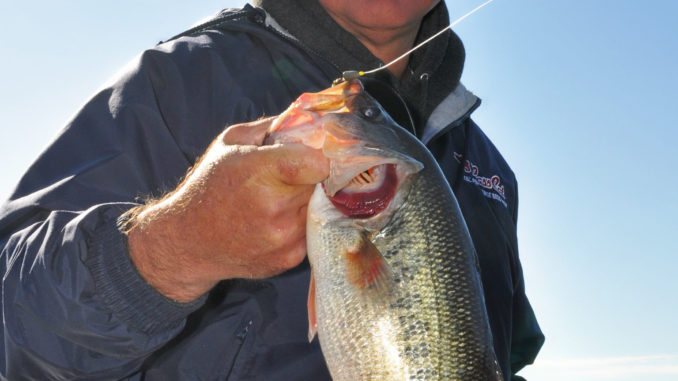
This Roanoke River impoundment may have the region’s healthiest bass population.
Lake Gaston may be the premier largemouth bass lake shared by North Carolina and Virginia.
That’s a bold statement about a body of water just downstream of massive John H. Kerr Reservoir and about half its size.
But Gaston’s 20,300 acres have more aquatic grasses than Kerr — aka Buggs Island Lake — to concentrate baitfish and bass; it contains plenty of threadfin and gizzard shad; it has good shoreline structure, stump and rock fields and spawning flats; and by law, its water levels can’t fluctuate more than 18 inches, making for a more-consistent spawn; its waters are 98-percent from the Largemouth Bass Virus that infected about 40 percent of the bass population at Kerr; and well, Gaston is just a prettier lake, too, if you prefer well-manicured lawns, magnificent homes and usually clear water because of summer “grass.”
Those factors make it a bass angler’s heaven. It’s also got box-car loads of 4½- to 5-pound fish, and they’ll hit just about any lure dropped in front of them — if an angler knows where to find them.
One of the best fishermen on Lake Gaston is Ivan Morris, whose brother, Rick, is a tournament bass pro who has been runner-up in the Bassmasters Classic.
Ivan Morris and his wife, Janet, purchased a lakefront lot several years ago and built a home on the north shore in a small cove about two miles downstream from Eaton’s Ferry Bridge, which crosses Gaston at mid-lake. The Morrises own and operate a custom glass-blowing business in Virginia Beach, Va. (The Glass Baron), and they’ve got a boat dock and a Ranger bass boat on a lift — when Ivan and Janet aren’t scouring the lake, usually starting each Friday evening.
“We come up here every weekend,” he said. “I like to fish, and, to tell you the truth, Rick fishes tournaments, so much he doesn’t fish here much. I probably know the lake a little better than he does now.”
Although Gaston is an excellent lake for bass, Morris said May presents something of a problem, as activity ranges from prespawn to spawn to post-spawn, depending on time of the month and weather.
“The spawn starts in March at Pea Hill Creek and lasts for 30 days,” he said. “But you can look around the lake, starting at the beginning of May, and find bass on the beds, suspended underneath docks, or in deeper water, getting ready to spawn.”
Shallow spots to find fish include bulkheads and seawalls, docks and grassbeds: hydrilla, milfoil, elodea and primrose.
“May is the greatest change month over a 30-day period on the lake,” he said. Best lures are Shakey Head worms, tube baits, creature baits and Wacky Worms cast underneath docks, especially those near deeper water, along with Carolina-rigged lizards or plastic worms and spinnerbaits.
“May actually is a tough month at Gaston, even though it’s easy to catch a limit,” Morris said. “But it’s tough to get a limit of big fish. Your best chance for big fish is in early May when you might catch some of the big females.”
That said, Gaston remains a gigantic jigsaw puzzle that Morris keeps trying to solve, but somebody keeps changing the pieces every few months. However, he has a good base of operations, plenty of friends and a wife who fishes with him as much as possible. He’s kind of like a golfer who repetitively plays the same course, trying to lower his score.
Morris said anglers need to be flexible and adjust their strategies during May because of changing conditions from the first of the month to the last day.
“Bass spawn from April through May at Gaston and are liable to be anywhere, depending on the weather,” he said.
“You might have to change what you do and where you fish. At any of the creeks or coves, you might target docks one day, then the weather changes, and fish move out on the points. If you’ve got a low-pressure system moving through, you’ll have mostly (male bass) guarding fry at the docks. If you see balls of fry around the docks, you know what’s there.
“But I don’t target docks if I see fry, even though a lot of people do. If you take a buck bass off a bed, the bream will move in and eat the fry in a matter of seconds, like trout eating May flies.
“I like to give those young bass fry every chance to survive.”
Morris may have put in more serious study of bass at Gaston and more time on the lake than any fisherman from either state. Here are some of his best May spots:
1 — North Point cove
36 31 077 N/ 77 57 560 W
During May, Morris said he fishes the boat docks from the back of the cove to halfway to its mouth.
This nondescript cove, on the north shore of the lake, is in the first creek on the right upstream from Gaston Dam, just across from Goat Island.
“I came in here five years ago during a March tournament and caught three 4-pounders at three docks in a row,” he said.
Last spring wasn’t particularly good in this cove because the Lake Gaston Homeowners Association contracted to have herbicides sprayed to eradicate heavy hydrilla, milfoil and other aquatic grass concentrations that draw baitfish and bass, Morris said. The grass often becomes so matted that locals can’t get their boats out of the coves into the main lake.
2 — Pinewood Acres
36 30 858 N/77 75 101 W
The small cove on the lake’s north side is bracketed by Pinewood Acres and Deer Haven developments and features multiple boat docks that hold bass during the spawn.
“There’s usually a good springtime dock pattern here,” Morris said.
The middle of the cove is 30 feet deep, which gives bass a place to stage during the prespawn until they begin to move toward the shallows.
“This cove has staging fish during February and March,” Morris said, “then they move to the secondary points, to the docks, then to the back of the cove.”
3 — Pea Hill Bridge
36 31 732 N/77 51 554 W
Fishing can be extremely good in this long section of the lake that contains Pea Hill Creek and Spring Branch.
“Early in the month, people will come (under the bridge) and won’t leave the whole day,” Morris said.
A worm rigged wacky-style works well for bedding bass under docks from late March to early May.
“The nice thing about Pea Hill is the feeder creeks and coves are mostly protected from the north wind in the spring,” Morris said. “This part of the lake also has a sand bottom, which is what bass prefer to make their beds. They like to spawn over sand.”
Docks and small pockets along the shoreline will hold largemouths during the spawn.
4 — Red Bug Point Cove
36 31 171 N/ 77 53 881 W
If a fisherman leaves Pea Hill Creek, he can head west until he reaches the next cove; the point on the west side of the cove is called “Red Bug Point.”
“There’s a lot of boat docks with elevated boat lifts in the first little cut to the left,” Morris said. “I know this place, and it’s a good one.”
It’s one of his favorite spots in May.
“I like to fish the tip of Red Bug Point for prespawn fish,” he said.
Morris will use the usual wacky worm on a drop-shot, Texas or Carolina rig, spinnerbait or shallow-running crankbait at the docks and an Alabama rig to fish the point. He sits in deep water and casts the Alabama rig toward the shore, then allows it to run into deeper water as he retrieves it until he locates the bass strike zone.
5 — East Fork Plantation cove
36 31 077 N/ 77 56 059
This cove is approximately 2.6 miles east of Red Bug Point and has many boat docks on its east side.
“In May, I like to fish a Shakey Head and wacky worm around and under the boat docks as you get near the back of the cove,” Morris said.
He also finds bass in May, depending on their staging areas — prespawn or postspawn — in deeper water at the main lake points or at secondary points.
“I like a Shakey Head or a Carolina rig worm or lizard at the main and secondary points,” he said.
6 — King’s Branch
36 31 596 N/77 57 732 W
This prime spot is 2.08 miles west of East Fork Plantation, and the entrance to King’s Branch is 2,000 feet west of the Eaton Ferry Bridge on the lake’s northern shoreline.
King’s Branch is a half-mile long, and Morris’ prime spot is about halfway back in the creek; no houses are visible along the shoreline from the mouth.
“It’s a good prespawn and spawning spot,” Morris said. “The best idea is get on the points back in this creek. I like to fish ’em with a Carolina rig, Shakey Head or jig.”
After the first turn in the creek, both sides of the Kings Branch have boat docks, and Morris targets them when the spawn heats up.
“I like to fish the boat docks back there with a Shakey Head, wacky worm or jig ‘n’ pig,” he said. “A Senko works well, too, into mid-April when they’re on the beds.”
7 — Variable Cove
36 31 490 N/ 77 59 999 W
Another 2.65 miles west upstream King’s Branch is a nameless creek that contains Morris’ favorite main-lake springtime points.
“This is a ‘variable’ cove,” he said. “If you go in there and bass are under the docks, you fish the docks all the time. If they’re on the main lake or secondary points, keep fishing there and don’t go any shallower.”
If the bass are oriented around docks, Morris will throw a Shakey Head or jig ‘n’ pig.
“But if you’re looking at the docks, and you see bass suspended underneath them, throw a weightless wacky worm,” he said. “If (bass) aren’t suspended, I throw a Shakey Head worm or a Senko.
“It’s a common mistake I see people make — they see bass (suspended), then throw a weighted lure under a dock.”
8 — Stillhouse Branch
36 32 961 N/78 01 056 W
Stillhouse Branch is 1.89 miles west of Variable Cove and is the only one of Morris’ top honey holes across the state line into Virginia (not to worry; North Carolina and Virginia honor each state’s freshwater fishing licenses).
“It doesn’t have any docks, but in spring, the fish get oriented on big stump fields in there, along with (shoreline) grass that goes all the way to the back of the creek,” he said.
Morris said this creek is a great place to throw small crankbaits and spinnerbaits during May.
“I’ll also start flippin’ (a jig ‘n’ pig or Texas-rigged lizard or worm) along the shoreline grass or at the visible stumps,” he said.
“The creek’s also got a good deep channel that swings back and forth, and bass follow it like a highway to their spawning areas.”
9 — Eaton’s Ferry Estates
36 30 107 N/ 77 57 071 W
Morris’ first hot spot on the south side of the lake is not quite a mile downstream from Eaton’s Ferry Bridge.
Several deep pockets off the main lake feature boat docks that are top bass haunts when the spawn gets cranking, and channels down the middle of these pockets are perfect highways for moving fish.
The small coves mark the shoreline between Eaton’s Ferry Estates and Doc Hedspeth Park.
“The boat docks, main lake and secondary points are all good places to throw Carolina rigs,” Morris said. “All the main-lake and secondary points have stumps, so they’re good places to throw a Carolina rig.”
10 — Poe Creek
36 29 921 N/77 52 826 W
Poe Creek is about 4.5 miles east of Eaton’s Ferry Estates and about 1,200 yards southwest of Osprey Point.
“This no-name cove in Poe’s is a good spawning area and a popular springtime place for bass fishermen,” Morris said. “It’s got a ton of docks, points and stump fields.
“I like to use a Carolina rig at the points and docks and because bedding fish will be in the back of the cove. A wacky worm works well back there and at the docks.”

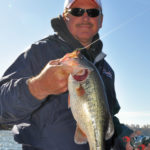
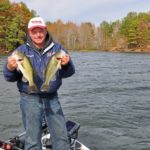
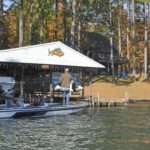
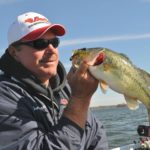
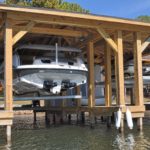
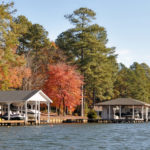
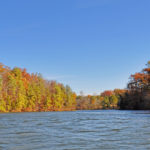
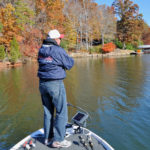
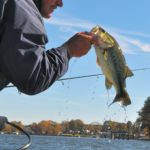
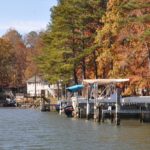
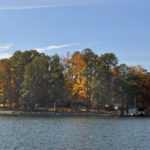
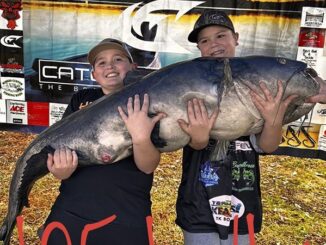

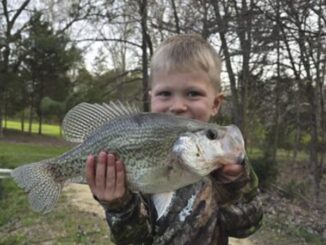

Be the first to comment